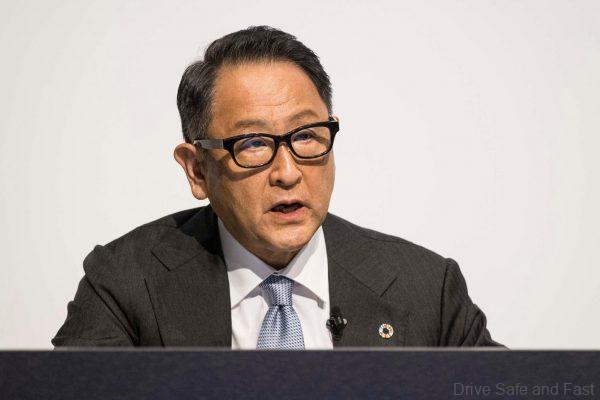Toyota, Nissan, Honda, Subaru and Mazda all working together in harmony for the sake of Japan’s auto industry.
It’s clear that China is on the brink of becoming a leader in the automotive industry. In the last ten years, they’ve shown an incredible amount of progress in making the transition towards electric power. They’re also leading the pack when it comes to digitalisation and experimental forms of car ownership. However, outside of brands like Haval, BYD and Geely, Chinese automakers have not been too successful in their export market operations. This gives rivals in Japan a chance to strengthen their position before future waves of Chinese exports hit key markets.

To this end, five Japanese car brands – most traditionally seen as each other’s rivals – are now working together to form the Japan Automotive Model-Based Engineering (JAMBE) centre. These five car companies are:
- Subaru Corporation
- Toyota Motor Corporation
- Nissan Motor Co., Ltd.
- Honda Motor Co., Ltd.
- Mazda Motor Corporation
They are joined by five automotive parts manufacturers:
- Aisin Corporation
- Jatco Ltd
- Denso Corporation
- Panasonic Corporation
- Mitsubishi Electric Corporation

What is the purpose of JAMBE?
The press release spews a lot of difficult jargon and hyphenated phrases such as “high-grade Monozukuri“. However at its core, what JAMBE will be doing is creating a centre where private automotive related companies can work with academia and the government to keep the Japanese automotive industry on its toes and competitive as the industry makes its “once-in-a-century” pivot away from petrol and diesel power. There’s a little more to it that you can read in the press release below.

What’s significant about JAMBE is the participants. We know that Toyota has some degree of influence over Subaru and Mazda, so those three are the ‘usual suspects’. However, Honda, who are usually quite independent are here as well. We did see them participate in the Toyota-led Monet Technologies group. They’ve also worked with Toyota on non-car related technologies. So the precedent is there, it’s just a little more serious this time.

The real surprise here is Nissan. They’re traditional rivals of Toyota and thanks to the Renault-Nissan-Mitsubishi Alliance (RMNA), they haven’t had to rely too strongly on forming other partnerships in Japan. This time, it looks like they’re actually playing ball. Let’s see where this goes.
Here’s the press release with more.
PRESS RELEASE
Five Japanese automobile manufacturers (SUBARU CORPORATION, TOYOTA MOTOR CORPORATION, Nissan Motor Co., Ltd., Honda Motor Co., Ltd., and Mazda Motor Corporation) and five parts manufacturers (AISIN CORPORATION, JATCO Ltd, DENSO CORPORATION, Panasonic Corporation, and Mitsubishi Electric Corporation) will be filling the role of executive member in the Japan Automotive Model-Based Engineering center (JAMBE), which went public today. JAMBE’s mission is to promote Model-Based Development (MBD) *1 across Japan’s automotive industry.
The center was founded to fulfill the purpose of creating the most-advanced development community in the mobility sector, able to carry out optimal and high-grade Monozukuri efficiently and without rework. Primarily consisting of private companies, the center succeeds an initiative led by Japan’s Ministry of Economy, Trade and Industry called “Enrichment of Suriawase 2.0*2” — an industry-academia-government and strategic future policy for MBD in the automobile industry — which had been compiled as a result of discussions conducted by the Study Group for Ideal Approaches to Model Utilization in the Automobile Industry*3.
Executive member companies will lead the center’s activities to contribute to making Japan’s automotive industry more competitive internationally by enabling academia and businesses to share digital models*4 across the board, linking academic research with development of parts, systems and vehicles. Therefore, allowing both sides to coordinate and make adjustments (Suriawase in Japanese) digitally from the initial stages of development.
JAMBE’s Guiding principle, Vision and Goal
<Guiding principle>
Contribute to making Japan’s automotive industry more competitive internationally by spreading and deploying MBD technology and concretizing the Suriawase 2.0 concept’s high-grade virtual model development technology.
<Vision>
Utilize MBD to promote carbon neutrality and innovation of vehicle technology torespond to needs such as CASE, thereby contributing to SDGs.
Encourage organizations of all sizes to use virtual models, thereby promoting highlyefficient research and development.
<Goal>
Concretize Suriawase 2.0: MBR*5 (Academia) creates new models and MBD (Industry) enhances development efficiency by using the same models across parts and vehicle manufacturers in the engineering chain for their Suriawase engineering style, creating new value and achieving the most efficient development processes in the world, free from rework.
Overview of Japan Automotive Model-Based Engineering center
Name:
Business outline:
Japan Automotive Model-Based Engineering center (JAMBE) Promotion of model-based development technologies, establishment of structure of model distribution across business entities as well as between industry and academia
[Joint research business project of participating companies (members) and Japan Automotive Research Institute JARI (secretariat)]
Chairperson of steering committee:
Mitsuo Hitomi (Senior Innovation Fellow, Mazda Motor Corporation)
Operation cost: Approximately 60 million yen per year Established: July 9, 2021